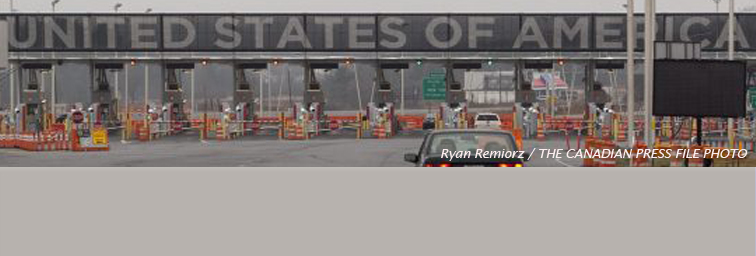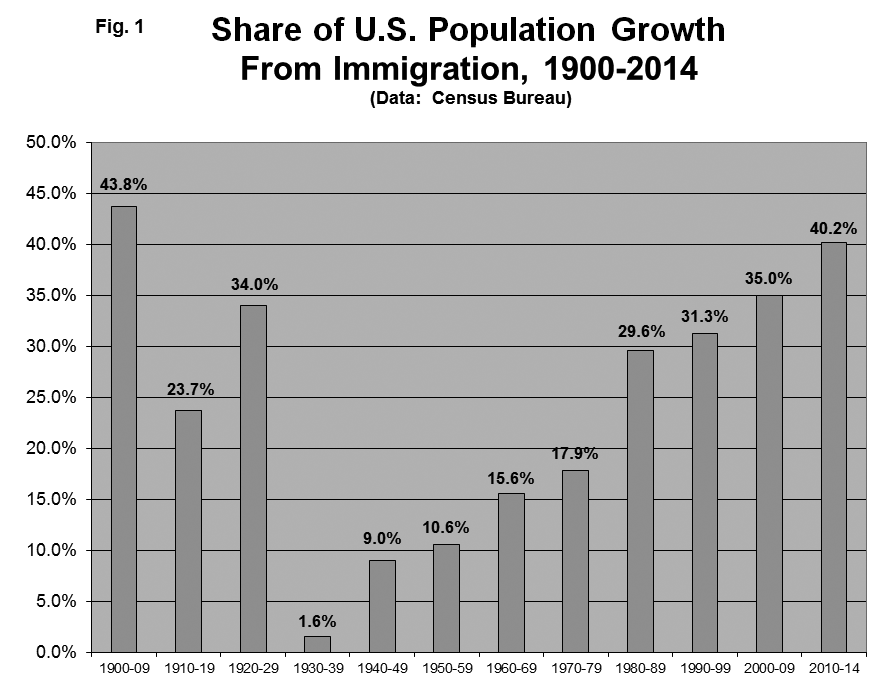
IMMIGRATION DRIVES U.S. POPULATION GROWTH
- Edwin S. Rubenstein
- January 12, 2016
- Forum Papers
- Forum Paper
- 0 Comments
Click here for a downloadable, printable PDF version
IMMIGRATION DRIVES U.S. POPULATION GROWTH
by Edwin S. Rubenstein
U.S. population, 322 million by late 2015, is growing by over 2.5 million per year. According to one study, the country can sustain a population of only 200 million, and that’s only if we cut energy consumption by half.
The key to population stability is a sustained drop in fertility to the “replacement rate” level, where births and deaths offset one another. In fact, Americans achieved replacement rate fertility in the early 1970s, and our native-born population has remained at or below replacement for much of the subsequent period. Yet population hasn’t leveled off, and isn’t expected to level off any time this century. The reason: extraordinary rates of international immigration.
Rising immigration levels, coupled with a declining rate of natural increase (births minus deaths), mean that immigration accounts for a larger share of U.S. population growth now than in any decade since 1900-09:
The chart shows that in the 1960s, first-generation immigrants (annual new arrivals) accounted for 15.6% of the increase in U.S. population. During the 2000 to 2009 decade that figure averaged 35.0%, and from 2010 to 2014 new immigrants accounted for 40.2% of all U.S. population growth.
Two points must be made at the outset. First, these figures understate the true impact of immigration by not including the U.S.-born children of immigrants who arrived during these many decades. As is brought out below, immigrant women give birth to a disproportionate share of babies born in the U.S.
Ed Rubenstein, president of ESR Research, is an experienced business researcher, financial analyst, and economics journalist. He has written extensively on federal tax policy, government waste, the Reagan legacy, and – most recently – on immigration. He is the author of two books: The Right Data (1994) and From the Empire State to the Vampire State: New York in a Downward Transition (with Herbert London). His essays on public policy have appeared in The Wall Street Journal, The New York Times, Harvard Business Review, Investor’s Business Daily, Newsday, and National Review. His TV appearances include Firing Line, Bill Moyers, McNeil-Lehr, CNBC, and Debates-Debates. Mr. Rubenstein has a B.A. from Johns Hopkins and a graduate degree in economics from Columbia University.

